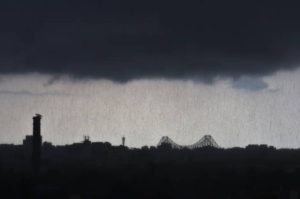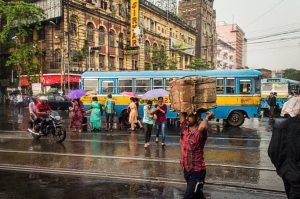West Bengal Monsoon Update — The monsoon season in West Bengal is off to a mixed start this year, bringing both relief and concern across the state. According to the latest report by the India Meteorological Department (IMD), rainfall patterns have been highly uneven across different districts, resulting in a variety of weather conditions — from torrential downpours in some areas to stubborn dry spells in others.

West Bengal Monsoon Update: What the IMD Report Says
The IMD’s detailed monsoon update outlines that the southwest monsoon, which officially hit the state earlier this June, has already created a visible contrast:
-
Heavy rain and waterlogging in districts like Kolkata, Howrah, and South 24 Parganas.
-
Patchy and insufficient rain across parts of Bankura, Birbhum, Purulia, and Murshidabad.
-
Gradual intensification expected in the coming two to three weeks as the monsoon advances further across the state.
More on India’s monsoon forecasts and patterns can be read at:
→ https://mausam.imd.gov.in/


Rainfall Deficit Raises Farmers’ Concerns in Rural Bengal
While cities like Kolkata have witnessed intermittent showers, rural areas in districts like Purulia and Birbhum continue to experience a rainfall deficit. Farmers, who depend on timely rains for paddy sowing and agricultural activities, have voiced growing concerns:
“Our paddy fields are still dry,” said Anwar Hossain, a small-scale farmer in Purulia. “If rain doesn’t come soon, the sowing schedule will be delayed — and that will hit the harvest and income.”
This pattern is becoming a regular worry for agricultural communities in rain-shadow areas of West Bengal. Farmers are now looking at alternative cropping patterns, while state agricultural officials have assured them of drought-relief measures if needed.
More on agricultural support policies in India can be explored at:
→ https://agricoop.gov.in/ (Ministry of Agriculture and Farmers Welfare)
Kolkata: Between Flooding and Traffic Snarls
The state capital, Kolkata, witnessed intense rainfall and waterlogging earlier this week. Rainwater accumulated on major thoroughfares like Park Street, Rashbehari Avenue, and EM Bypass, forcing commuters to navigate flooded streets. Several low-lying areas, including Behala, Tollygunge, and Salt Lake, reported localized flooding.
Residents expressed mixed feelings — relief that the rain had brought cooler weather, yet frustration over frequent traffic jams and delayed commutes.
“Every year it’s the same,” noted a commuter from Gariahat. “We wait for the monsoon to break the summer heat, but when it rains, the roads become rivers.”
Kolkata Municipal Corporation (KMC) officials assured citizens that water pumps were working at full capacity to drain water from key intersections.
Impact on Schools and Daily Life
The unpredictable rain pattern led to:
Schools allowing early dispersal due to traffic congestion and waterlogging.
Public transport delays as buses and autos faced difficulties on waterlogged streets.
Sudden power outages in some parts of North Kolkata due to rain-induced short-circuits.
More information on school guidelines during inclement weather is available at:
→ https://banglarshiksha.gov.in/ (West Bengal School Education Department)
Health Advisories and Precautions
With the first burst of monsoon, the West Bengal Health Department has issued advisories urging people to take extra care against waterborne diseases, such as dengue, cholera, and leptospirosis — which often surge after heavy rain. Health officers have been deployed to monitor stagnant water accumulation in and around residential areas to minimize mosquito-breeding spots.
“We recommend everyone wear protective clothing, use mosquito nets, and ensure there is no stagnant water near their homes,” said a Health Department official.
More on public health advisories can be found at:
→ https://www.wbhealth.gov.in/
What Does the Extended Forecast Say?
The IMD’s extended monsoon outlook for West Bengal indicates that rainfall is expected to pick up steadily by the end of June:
-
Thunderstorms and moderate rain across Kolkata and surrounding urban areas.
-
Even rain distribution across northern districts like Darjeeling, Jalpaiguri, and Cooch Behar.
-
Possibility of heavier rainfall along coastal districts like East Midnapore due to low-pressure areas forming in the Bay of Bengal.
Meteorologists have cautioned that flash floods and landslides cannot be ruled out in hilly regions if the rain intensity increases.
Climate Change and West Bengal’s Rainfall Patterns
Scientists and climate experts are pointing to larger climate patterns, including climate change and El Niño, as reasons for the unpredictable rainfall.
“The monsoon pattern is shifting,” said a senior climate scientist. “We are witnessing erratic rains, longer dry spells, and more intense downpours. Preparing for these fluctuations is becoming vital for the state.”
More on climate trends can be explored at:
→ https://climate.nasa.gov/ (NASA Climate Change Portal)
Public Response and Awareness Initiatives
In response to these unpredictable weather patterns:
-
Local administrations have been holding awareness drives to educate people on rain safety.
-
Farmers’ groups are looking at alternative water-saving techniques and drought-resistant crops.
-
NGOs and civil societies have been hosting monsoon safety workshops across rural villages.
Conclusion: Weathering the Season Ahead
As West Bengal braces for the heart of the monsoon season, communities across the state — urban and rural alike — must stay prepared for the mixed effects of heavy rain, water scarcity, and changing weather trends. The state’s response — from KMC to district panchayats — will play a decisive role in how effectively West Bengal adapts to this year’s unpredictable monsoon.
With a collective focus on better infrastructure, early warning systems, and public cooperation, West Bengal can navigate this mixed monsoon period more safely and sustainably.
Also read: Home | Channel 6 Network – Latest News, Breaking Updates: Politics, Business, Tech & More

